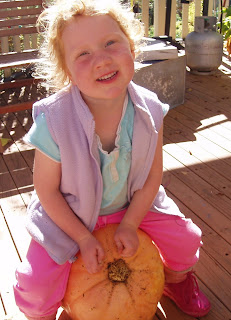I have being trying for some time to cut back on the use of strong chemical cleaners in our household. We have a classical atopic family and the kids and Dad are allergic to many soaps etc... so we have been a no soap or shampoo shower and bath family for some time.. and we use a range of microfibre cloths around the house......
In fact, the kids, now 9, 7 and 4 do not get their hair washed with shampoo and conditioner - and have not since their birth. They have grown up with sorbolene in the bath and shower. To detangle our youngest's wild curls we use a "magic" spray of curling solution - water. It works well - she will not even let the boys use it because they don't have curls.
On a more personal front - I have been using Tricia's
moisturiser bars in the shower for some extra oiling and protection for dry skin, and have just recently changed to cleaning my teeth with bicarb soda and are currently trialling bicarb soda as a deodorant - I believe that it doesn't stop you sweating or the wetness but changes the pH so the bacteria don't grow and smell. So simple.
What "green" low chemical personal toiletries have you tried? What are your favourites.
A while ago we stopped purchasing commercial cleaners for the kitchen benches, windows and the bathroom. We now have a cleaning kit a mix of vinegar, bicarb soda and vinegar - I feel so much better letting the kids help with the cleaning now.
My bathroom cleaning kit - a spray of vinegar with a little Eucalytus oil for the glass, bicarb soda and borax powder and a vinegar spray for the tile, toilet and floor.
In the kitchen, we use a dishwasher .... I tried various alternative options for dishwasher powders (bicarb alone, bicarb and borax, and also bicarb, borax and a commercial powder, along with reduced amounts of my commercial powder) and have decided that the best option is to just reduce the amount of "green" commercial powder that I use - I have cut back to about 2 teaspoon fulls per standard wash (about 1/4 of the powder compartment on the dishwasher door) and it seems to be working just as well - we were previously filling the detergent compartment.
The bicarb and bicarb and borax options in the dishwasher seem to leave the glasses and dishes with a film on them and almost chalky.... if anyone have any better ideas I would welcome any comments.
For general bench top cleaning I use microfibre clothes, old cloth nappies, bicarb soda and a spray bottle of vinegar with a couple of drops of essential oil for that fresh smell (I have a lemon grass fresh spray at present).
I found this
file on 60 uses for bicarb soda - so I guess of got a lot more uses to explore. What I like about simple cleaners such as bicarb soda is that they come in a recyclable cardboard box and they are cheaper than commercial cleaners.
In the laundry we have had to change to low allergy laundry powders because of eczema rashes... with the best results often from the low additive / low fragrance "Green" laundry powders... I also
strip wash the kids school shirts and Dad's work shirts a few times a year to get them cleaner and fresher. One thing that I have on my list to try - is to use
no washing powder for clothes that are not really dirty... I have heard that this works!
One of our big "green" philosophies for household cleaning is to
not over clean or sterilise the environment - that is live with a little more dirtyness - it won't kill us - and maybe it is even better for us!
What are your best "green" cleaning ideas?

































